Every year, thousands of exploding stars appear in the sky in different and unusual forms. Astronomers want to know what makes them explode
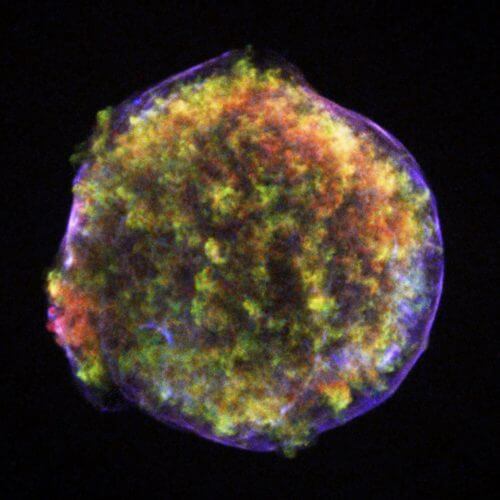
By Daniel Kaysen, The article is published with the approval of Scientific American Israel and the Ort Israel network 25.08.2016
- The advent of automatic telescopes that rapidly scan the sky has revealed masses of unusual supernovae, including stellar explosions 100 times brighter than normal, and also unexpectedly dim supernovae that hardly produce an explosion.
- Scientists have several theories as to the types of stars that might create these strange events and how they might create the heavy chemical elements that populate our planet and our bodies.
- Future observations will help us answer many fundamental questions about stars, their life and death, and how they affect life on Earth.
Every second, more or less, somewhere in our visible universe, another sun is destroyed in a stellar catastrophe, a process in which a star flickers, collapses, collapses into a black hole, or explodes as a supernova. This dynamic side of the universe, hidden behind the seemingly calm night sky, has recently come to the forefront of astronomical research. For almost a hundred years scientists have been trying to reconstruct what happened during the billions of years of cosmic evolution, but only recently have we begun to analyze celestial events on scales of days and hours, thus witnessing the fickle lives and deaths of stars.
Although in the past we did not have the tools to study these phenomena in detail, evidence that the universe is transient has existed for thousands of years, at least since The Chinese observations from 1006 AD, in which a "guest star" became visible to the naked eye for a few weeks, then faded and disappeared. The great astronomer Tycho Brahe document A similar event in 1572, and like him also Johannes Kepler, as30 years later. We now understand that these ghost stars were supernova explosions of stars. When a supernova is at its peak, it may shine brighter than a billion suns, but since most of them occur very far away, they appear to us as dim spots of light that can easily be lost in the big sky.
Modern technology is currently revolutionizing the study of the dynamic universe. The telescopes were made robotic and equipped with high-definition digital cameras, which can feed data into image processing and pattern recognition computer programs. These machines regularly monitor large swaths of sky, keeping a digital eye out for anything that might suddenly appear in the night sky. Over the past ten years or so, this new technological capability has allowed astronomers to discover thousands of new stellar explosions each year. The number of new supernovae we find every week is equal to the number of supernovae observed throughout the 20th century.
Not only are we collecting more supernovae, we are also discovering new and different types of them. There are stellar explosions that shine with an incomparably intense light, 100 times brighter than normal supernovae; Others are actually 100 times dimmer. Some of them are painted deep red; others in ultraviolet. Some glow in bright light for years; Others fade within a few days. It turns out that stellar death is much more diverse than we imagined.
Astronomers are still trying to decipher what is behind these strange stellar explosions. There is no doubt that they tell us something important about the life and death of stars and about the physics under the most extreme conditions of temperature, pressure and gravity. We hope that by fully exploring the supernova zoo, we can finally understand what causes stars to disintegrate and turn into dead stellar ruins such as black holes.
Supernovae can also teach us something about where we came from. After the Big Bang, the universe contained mainly the lightest elements: hydrogen and helium. According to the theory, all the other elements we encounter - the calcium in our bones, the iron in our blood - were forged in nuclear fusion processes inside exploding stars and blown out of them. Scientists used to think that routine supernovae created all the heavy elements, but the discovery of so many out-of-sync explosions now suggests the possibility that different slots in the periodic table have different origins. By observing a large number of diverse supernovae, we are getting closer and closer to being able to understand precisely how a variety of stellar explosions could have contributed to the mix of elements that make up our planet and all life on its surface.
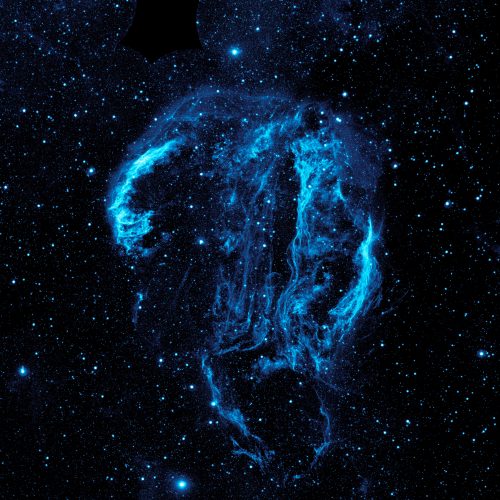
Stellar catastrophes
In order to understand how strange some of the supernovae we discover are, let us first of all look at a typical supernova, which is also a phenomenon definitely worthy of note. A star is like a stable nuclear reactor: a huge ball of plasma, held together by gravity and fueled by nuclear fusion occurring in its dense core. The heat emitted from the fusion creates pressure that opposes the inward pull of gravity. A supernova explosion represents a type of catastrophic instability in this balance of forces: its victory sends the reins of gravity over nuclear combustion, or vice versa.
The most common type of supernova occurs in intermediate-sized stars, which are 10 or more times the mass of our Sun. These stars live for millions of years, constantly fusing hydrogen nuclei and turning them into nuclei of heavier and heavier elements. Once they have burned all their guts and turned them into iron, which is essentially nuclear ash, it is no longer possible to continue the fusion processes. Without this outward pressure, the star's inner core collapses under the pull of gravity, compresses to a million times smaller volume and becomes an ultra-dense mass known as a neutron star, which packs more mass than our Sun into a region no more than a few kilometers in diameter. The enormous energy released in this free fall blows up the rest of the star.
To get an idea of the energy involved in a typical supernova explosion, imagine that our Sun burns through its entire supply of hydrogen in a few seconds - fuel that should be enough to sustain it for more than 10 billion years. This enormous amount of energy was given its own physical unit: a unit her daughter One (named after the Nobel laureate physicist Hans is her daughter). When a supernova explodes, the star's internal temperature exceeds 2.7 billion degrees Celsius, creating a supersonic shock wave that leaves in its wake a mixture of newly melted heavy elements, such as zinc, calcium, iron, and radioactive isotopes of nickel, cobalt, and titanium. Within a few minutes, the star explodes into a cloud of ash and radioactive fragments, which spray away at a speed of 30 million kilometers per hour, that is, a few percent of the speed of light.
Our sun, fortunately, is too small to ever go supernova. But if it were to happen, the first sign of it on Earth would be a brief flash of powerful X-rays that would destroy all life on the planet. Within a few minutes the solar debris cloud will swell to twice its size and be 1,000 times brighter than the Sun. After a few hours the cloud will envelop the Earth, and a day later it will engulf Jupiter and Saturn. After a few weeks, the solar ash will spread throughout the entire solar system. At this stage, the fragments will already become transparent, and the light that was trapped inside them will wash out, at a rate that will reach a peak of a billion units Solar luminosity, before fading.
Astronomers almost never catch the short X-ray burst of a supernova explosion when it's by itself, and rarely can we, after rummaging through the archives, find a picture of the original star before it exploded. What we usually see is the devastation left after the explosion: the huge cloud of swelling radioactive debris that glows visible for weeks or more. By examining the ash, we try to piece together a story that describes what kind of star was destroyed and why.
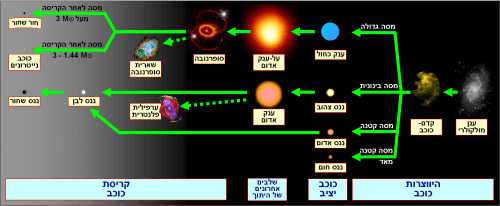
Strange clarity
In the zoo of strange supernovae recently discovered, perhaps the most dramatic of all are the hyper-energetic explosions, which I'll call ultranovae here, whose glow is more than 100 times stronger than that of normal supernovae. Ultranovae are the brightest and most distant supernovae ever discovered, and are visible across most of the width of the visible universe. Such events are extremely rare: perhaps one in 1,000 normal supernovae. Astronomers don't have enough evidence to explain why these explosions are so bright, but there are three leading theories. One of them might explain all or most of the ultranovae we see, but it's more likely that all three scenarios happen with some frequency.
Supernova of particle pairs. It goes without saying that many try to associate ultranovae with very massive stars. The theory raises the possibility that very large stars are actually quite fragile types, subject to the influence of various instabilities. In particular, the cores of stars whose mass is between 150 and 200 solar masses can be so hot that they produce bursts of pairs of matter and antimatter particles (ie, in this case, electrons and positrons). Energy is needed to create these particles, and so the outward pressure on the star diminishes, and its core, still loaded with burnable nuclear fuel, collapses inward. The result will be disastrous. The compression of the core will accelerate the nuclear fusion until it is out of control, burning almost everything in its vicinity. The sudden release of energy, about 100 terabytes, will reverse the collapse on its face and blow the star to pieces. Nothing will be left behind.
These massive nuclear explosions produced clouds of debris whose radioactivity is 1,000 times greater than the clouds formed in normal supernovae. These clouds are also hypothesized to be very opaque and massive, so it would take a year or more for light to flicker out of them. Therefore, we expect the destruction left behind by these explosions to be very bright and long-lasting. Some of the recently discovered ultranovae have exactly such properties, so some astronomers claim that we are witnessing a giant star that was killed by contamination from pairs of microscopic particles. Some dispute this, arguing that other theories provide a better explanation for these data. We hope that future observations of such bright, long-lived events can better reveal the composition and velocity of the stellar debris cloud and tell us whether this scenario is indeed happening.
False alarm supernovae. Another idea that may explain the ultranovae is that they originate from stars with a slightly smaller mass (between 70 and 150 solar masses). These stars are hypothesized to fall into instabilities similar to those lurking in their more massive brethren, but the conditions are often not as severe: Once the star begins to collapse inward and ignite an unusual fire, it may recoil, respread, halt nuclear reactions before they get out of control to recover and live one more day. However, while restoring the balance, it is likely that the star will throw off large chunks of its outer layers, creating a "fake" supernova - an eruption that resembles a dim supernova but is actually nothing more than a near-death experience.
Stars whose mass is in this range may go through several such "hiccups", each time losing a little more material, until finally their nuclear fuel runs out and they explode in a normal supernova. When such a star does eventually die, it will fling debris into a mine-strewn environment: the material from previous eruptions. The violent collision of the supernova fragments with this debris would produce incredibly bright fireworks that could explain some of the ultranovae.
Automated surveys have recently documented the last and capricious years of a massive star's life. In 2009, astronomers spotted what looked like a fairly normal, albeit dim, supernova. They named it SN2009ip, and it faded within a few weeks and was more or less forgotten. A year later, to everyone's surprise, another dim "supernova" was observed in exactly the same place. Apparently the star is not dead yet. In 2012, astronomers saw a third outburst and then, a month later, a very bright outburst.
Some scientists believe that the penultimate outburst was the actual death of the star, while the final outburst, the most luminous flare, resulted from the supernova's debris cloud being thrown into the material ejected by the previous dying gas. Others think that the star is still alive and that it will continue to entertain us with further eruptions. It will be a few years before the dust settles, but for now we've seen a violent instability of the kind we think characterizes the end of life of some massive stars.
A magnetic supernova. Finally, an alternative line of thought about ultranovae posits that their unusual brightness has less to do with extreme mass and more to do with extreme rotation. Stars with masses greater than 10 solar masses at the beginning of their path will likely produce normal supernovae that form neutron stars upon their death. But if such a star was previously spinning around itself at high speed, the collapse could spin the neutron star to enormous speeds, like ice skaters putting their hands to their bodies to speed up the spin. Basically, a neutron star can spin up to 1,000 revolutions per second. At a higher speed, the star will be torn apart by the centrifugal forces. The kinetic energy stored in such a massive and swirling vortex is enormous: up to 10 her.
How can this rotational energy be used to fuel an ultranova? Neutron stars have massive magnetic fields that may transfer the energy. To understand how, imagine that you are rotating a simple magnet that you took off the door of the refrigerator on the palm of your hand. As you do this, you distort the magnetic field surrounding it. Although you can't see or feel it, some of the energy you put out is carried in space in the form of electromagnetic waves. We believe that the same process occurs, on much larger scales, around neutron stars. The most striking example is Cancer Nebula, supernova remnants which was identified by Chinese astronomers in 1054 AD. Today, the source of the light we see from the nebula is a spinning neutron star that creates a vortex of magnetized plasma. Over the past 1,000 years, the warped magnetic field has reduced the neutron star's spin energy and heated the surrounding gas, and is the source of energy for this beautiful display.
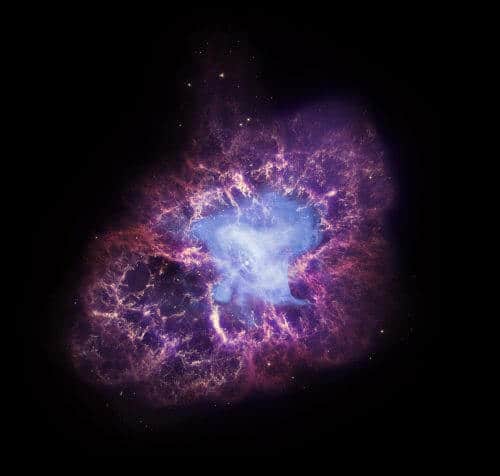
About five years ago, my colleague Lars Bildsten from the University of California, Santa Barbara, and I proposed that an enhanced version of this process might explain the high luminosity of ultranovae. The neutron star's magnetic fields would have to be 100 to 1,000 times stronger than the fields in the Cancer Nebula, and it would have to spin at speeds close to the boundary velocity. On such a star, almost all of the spin energy will be depleted within a month, causing the supernova debris cloud to glow a million times brighter than the light of the Cancer Nebula. Although the numbers sound extreme, we have already observed several neutron stars with magnetic fields of similar strength (although none of them are in the supernova phase). They are called Magnetars, and they hold the strongest magnetic fields known in the universe. Ultranovae can therefore sometimes signal the birth of a high-speed spinning magnetar and that it is about to slow down.
Unexpected ambiguity
At the other end of the supernova spectrum, opposite to ultranovas, astronomers recently discovered the strange phenomenon of loose supernovae. Wide-field surveys have discovered strange supernovae, 100 times fainter than normal events. Scientists disagree about what causes these faint bursts, but they suspect that some of them, surprisingly, are the last, choking gasps of the most massive stars that ever existed.
A failed supernova. It is not clear how large the mass of a star can be, but it is likely that there are stars that can reach a mass 300 to 1,000 times greater than the mass of the Sun (even larger than the very massive stars that we believe may explode due to particle pairs). These whales can be expected to produce the most spectacular supernova explosions ever. But in practice they probably fall. The gravity of such a star is so strong that once it loses stability, total collapse is inevitable. Eventually, the inward collapse will tear a hole in spacetime itself, creating something denser than a neutron star: a black hole.
Theoretical models show that most of the star's mass will be swallowed by the black hole and suddenly disappear from view. This supposed god event is called a nova. Automated surveys look for anovas in a reversed way: instead of looking for a sudden light in the sky, they look for a bright star that is going through a sudden blackout.
Although such stars, the creators of black holes, fail to emit an explosion, they may at least emit a faint whisper. The cores of some giant stars are surrounded by an airy and faint corona of hydrogen gas. As most of the structure of such a star is sucked beyond the event horizon of a black hole, the gas corona may heat up and be ejected, creating a faint glow in the process. The death of a very large star would therefore lead, ironically, to an extremely faint and faint supernova.
Neutron stars collide. Another type of subluminous burst may come from an entirely different kind of extreme event: the collision of two neutron stars. Massive stars are often born as holiday pairs around a common center. These stars will go supernova one after the other, and if they don't scatter in opposite directions, they will leave behind a double (binary) system of two neutron stars (or a neutron star and a black hole or two black holes). Over time, the two compressed bodies will move closer and closer together in a spiral orbit, eventually colliding and merging into a larger black hole. This process was recently confirmed with the discovery of gravitational waves created by mergers of pairs of black holes. When neutron stars merge, the calculations raise the possibility that the extreme gravitational forces (which are up to 10 billion times the Earth's gravitational pull on our bodies) are strong enough to peel off about 99 percent of the star's skin and throw it into space (the other XNUMX percent falls into the black hole).
This small amount of matter that escapes from the black hole is apparently a strange business: a nebulous sea of detached particles, mainly neutrons, along with some protons and electrons. As the gas pressure decreases, the particles will begin to bind together and form heavier nuclei. The protons will repel each other because of their positive electrical charge, but neutrons have no charge and stick to other particles more easily. Through the gradual addition of neutrons, the nuclei will become heavier and heavier, and will produce a rain of elements from the lower half of the periodic table, such as gold, platinum and mercury, mixed in different types of radioactive waste, such as uranium and thorium. Neutron star collisions are one of the few places in the universe where scientists believe such heavy elements can form.
The abundance of radioactive material should cause the fragments to glow like a supernova. But because of the low amount of mass involved in the story (less than 100 percent of the material found in a supernova), we expect the light to be XNUMX times dimmer than that of a normal supernova and last only a few days. Recent theoretical work I have done with my student, Jennifer Burns, at the University of California, Berkeley, raises the possibility that the particular composition of heavy metals in such clouds should give the glow a characteristic color, a deep red or infrared hue. This phenomenon was called a kilonova.
Astronomers may have recently been able to see the red radioactive "smoke" rising from such a neutron star collision for the first time. In June 2013, a brief burst of gamma rays alerted astronomers that they might be facing an imminent neutron star merger. They pointed the Hubble Space Telescope at the site and picked up a brief infrared glow. Several weeks later the glow disappeared. The data are few, but consistent with theoretical predictions of what a kilonova should look like. If this identification is correct, then this is the first time we have directly witnessed the creation of heavy and precious metals. We would like to observe more such events so that we can better determine the amount of metals that such explosions synthesize and whether they can provide a full explanation for the proportions of gold, platinum and other elements in the universe or only a partial explanation.
The chaotic universe
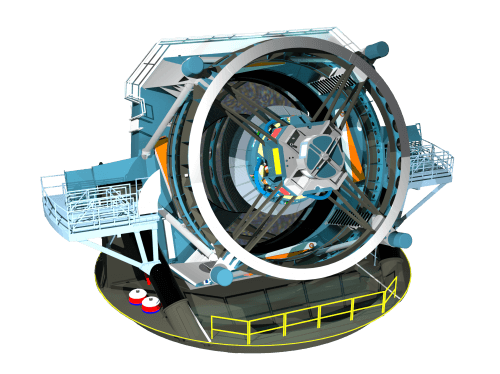
Our study of the dynamic universe has only just begun. In the next ten years or so, automatic telescopes, such as the transient event facility named after Zwicky (ZTF) which should start operating near San Diego, the Large Synoptic Survey Telescope (LST) in Chile, the construction of which is in progress, and the Wide-Field Infrared Survey Telescope (WFIRST) that NASA plans to launch into space, will be able to scan most of the sky every few nights, and discover hundreds more supernovae than we discover today. Meanwhile, modern supercomputers are gaining the ability to make detailed XNUMXD simulations of these events, allowing us to get a tangible picture of what might be going on deep in the cores of exploding stars.
The death of a very large star will lead to an extremely dim supernova
Data collected in the coming years will challenge our theories regarding many types of stellar death. Each of the scenarios described here is physically conceivable, but not proven. With additional observations of unusual supernovae, we hope to be able to find out which of these explosive possibilities is actually realized in nature. Apparently, it will turn out that the universe is stranger than we imagined, and that even more exotic phenomena will be discovered in it than we have dreamed so far.
Ultimately, we will also be able to provide a richer description of the material that makes up our bodies and the world around us. The gold ring on your finger, for example, has a long history that extends far beyond the days of your ancient ancestors. This material likely first floated in the iron reactor of a massive star that weakened, collapsed, and became a compressed neutron star. Many years later, perhaps even a billion years, this neutron star may have collided with another compact star, spewing a cloud of radioactive debris into space. This cloud, flying at a speed of about 100 million kilometers per hour, crossed more than 1,000 light years across the galaxy, mixing with other gases on its way, until it finally settled in the crust of a planet called Earth. A period of time later, people dug up and took out these star fragments, fashioned a ring and began to tell their story.

2 תגובות
More interesting, what else exists within us that we haven't discovered yet?
Could it be our desire? The same root that surrounds our thoughts, needs and vocation?
https://www.youtube.com/watch?v=_krwRDfYAsM
https://www.youtube.com/watch?v=qGwRQvuAEP0
Interesting article despite its length,
It's a shame that the translators don't understand that when they try to inflect names or concepts for Uzis
For many, according to the rules of Hebrew grammar, a vowel is accepted,
"Supernovas", ultranovas", "catastrophes" equal or worthless
Like writing personal names in the plural: "Avi Yam" "Tsila Vat" "Daniel Yam",
Am I the only one who sees the bullshit?